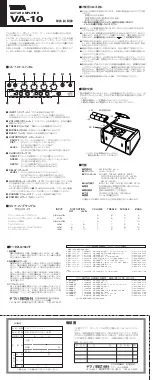
3
1.2
Features
HDMI v1.4, HDCP 1.1 and DVI 1.0 compliant
Allows distribution of 2 outputs
Supports 3D video resolutions (Frame Packing, Side by Side)
Supports 10/12-bit color depth display
Supports PC resolutions to 4kx2k
Supports HDTV resolutions to 1080p
Supports SDTV resolutions of 480i and 576i
Supports DVI when using optional HDMI to DVI Adaptors
Signal Equalization feature enables longer cable runs
Supports automatic discovery of monitor EDID
1.3 Getting the Best Results
There are many factors affecting the quality of results when distributing HDMI type
signals. Some basic precautions will ensure the best possible performance from your
new HDMI DA.
Output display device
– The quality of the output signal will depend largely upon
the type and quality of the HDMI display device used. For instance, some video
projectors just look better than others.
Distance between the DA sources and the display
–
This plays a major role in
the final result. Long distances are possible, but special measures should be taken
in order to avoid signal loss. These include using high quality cables. Line amplifiers
or the use of signal extension products may also be necessary for the longest runs.
Input/Output connection cables
– Low quality cables are susceptible to
interference. They degrade signal quality due to poor matching and can cause
elevated noise levels. Cables should be of the best quality.
Interference from nearby electrical devices
– These can have an adverse effect
on signal quality. For example, an older computer monitor often emits very high
electromagnetic fields that can interfere with the performance of video equipment in
its proximity.




























